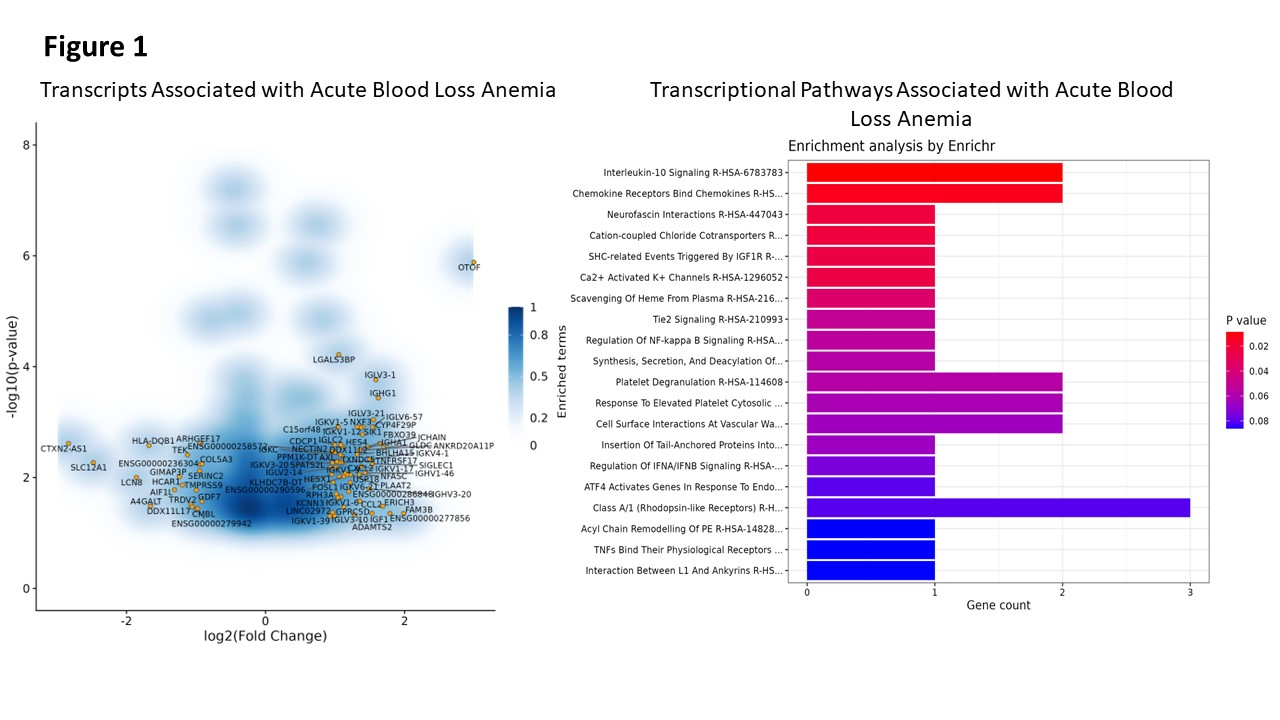Session Information
Session Type: Poster Session C
Session Time: 10:30AM-12:30PM
Background/Purpose: Patients with systemic lupus erythematosus (SLE) undergoing total hip arthroplasty and total knee arthroplasty (THA and TKA) experience higher complication rates than osteoarthritis (OA) patients.
There are several molecular processes in SLE patients that may affect the response to the physiologic stresses of arthroplasty. Excess Type 1 interferon (IFN) is a critical driver of SLE pathogenesis, and it may affect the response to surgery as well as the postoperative healing process. However, other pathways associated with negative postoperative outcomes have not been identified.
Methods: This prospective study enrolled 30 SLE patients with SLE satisfying 2019 ACR/EULAR or the 1997 modification of 1982 ACR SLE classification criteria, and 26 age/sex/procedure-matched OA controls who were undergoing THA/TKA. SLE-specific disease activity was evaluated by a rheumatologist (D.R.F., C.S.) on postoperative day 1 (POD1). Standard laboratory tests, as well as plasma and whole blood samples were collected from subjects at baseline, POD1, and six weeks postoperatively (6W). Whole blood RNA sequencing was performed from a subset of samples obtained at baseline, POD1, and 6W. Adverse events were assessed at baseline, 1-, 6-, 12-, and 24-weeks. Descriptive statistics were performed, and comparisons were made using Fisher’s exact test, Chi-square and Wilcoxon rank-sum test.
Results: The SLE patients exhibited low disease activity, with a mean Systemic Lupus Erythematosus Disease Activity Index-2K score of 4, but they experienced significantly more postoperative anemia than OA patients, and were seen in the emergency department more often in the 24 weeks postoperatively (Table 1).
The IFN module identified on weighted correlation network analysis was significantly elevated in SLE patients at all time points. The IFN module expression fell in both groups on POD1, while at 6W, the IFN activity returned to levels comparable to baseline in OA, but was significantly higher than baseline in SLE. A B cell module was also identified, and was significantly lower in SLE patients versus OA controls at all time points. Lower B cell module expression (including FCRL2, PAX5, and CD22) was also associated with postoperative anemia, though immunoglobulin transcripts and IFN module expression were higher in this same group (Figure 1). Patients undergoing THA or TKA for avascular necrosis were noted to have high baseline expression of IFN-inducible transcripts, immunoglobulin transcripts, and cell cycle-associated transcripts, though they did not demonstrate specific reduction in B cell module expression (Figure 2).
Conclusion: This prospective analysis reveals dynamic changes in disease-associated transcripts, including B cell and IFN modules, in SLE patients post-THA/TKA, with distinct expression patterns linked to anemia and avascular necrosis. This the first prospective analysis of SLE patients undergoing THA/TKA, proving the feasibility of such studies and larger prospective studies may allow for better assessment of factors associated with adverse events in SLE patients after THA/TKA.
To cite this abstract in AMA style:
Fernandez D, Batter S, Jannat-Khah D, Olferiev M, Mannstadt I, Figgie M, Sculco P, Blevins J, Siegel C, Greenman D, Kirou K, Goodman S. Systemic Lupus Erythematosus Patients Exhibit Dynamic Changes in Disease-Associated Transcripts Following Total Knee or Total Hip Arthroplasty [abstract]. Arthritis Rheumatol. 2024; 76 (suppl 9). https://acrabstracts.org/abstract/systemic-lupus-erythematosus-patients-exhibit-dynamic-changes-in-disease-associated-transcripts-following-total-knee-or-total-hip-arthroplasty/. Accessed .« Back to ACR Convergence 2024
ACR Meeting Abstracts - https://acrabstracts.org/abstract/systemic-lupus-erythematosus-patients-exhibit-dynamic-changes-in-disease-associated-transcripts-following-total-knee-or-total-hip-arthroplasty/



